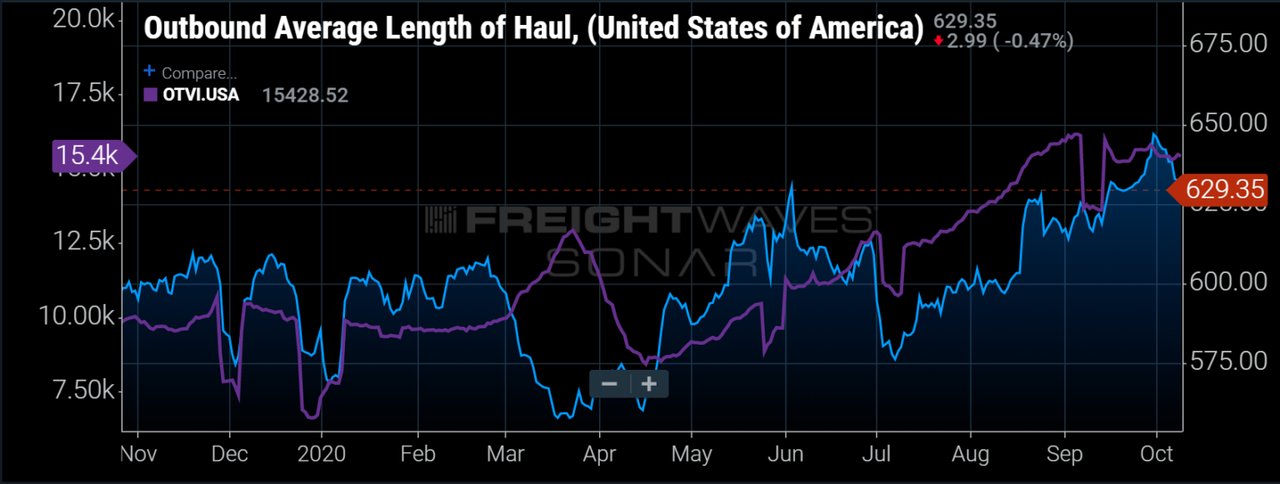Long-Haul Freight Boom Leads To Pre-Peak Capacity Crunch
Tyler Durden
Tue, 10/13/2020 – 12:00
By Zach Strickland of FreightWaves.com
The average length of haul for requested load tenders has increased 6% or roughly 20 miles since the same period last year. This may not seem like a big deal at first, but with accepted volumes being over 20% higher than this time last year, those miles have a multiplier on them — putting a deeper strain on capacity than the tender volumes alone suggest.
Chart of the Week: Outbound Average Length of Haul, Outbound Tender Volume Index
The average length of haul for loads tendered in 2019 was 591 miles through September. Year-to-date in 2020, loads have averaged over 600 miles. Making the 2020 number a little deceiving is the fact it includes the pandemic-inspired shipping spree that saw a boom of short-haul loads in March when the average load moved 568 miles. If we remove March, the average mileage moves closer to 607. So why has the length of haul jumped so much this year?
Freight originating in Southern California has accounted for nearly 8% of the total outbound freight volume in the U.S. over the past two months — currently the first- and fourth-largest outbound markets in the country. The average length of haul for freight leaving the Los Angeles and Ontario, California, markets has been 1,059 and 879 miles, respectively, according to FreightWaves tender data. Accepted volumes have grown over 9% year-over-year in August and September in these markets. So why the growth in this region?
Shippers have been pulling record amounts of freight into the ports of Los Angeles (+18% YoY in August) and Long Beach (+13% YoY in August) over the past few months. A good portion of the imported freight, which ships in international 20-foot and 40-foot containers, gets placed directly onto the rails.
The unexpected surging container volumes have led to the implementation of peak season surcharges for any noncontracted freight that are extremely cost-prohibitive, pushing a lot of the excess volume to trucking. This move exaggerates the already tight truckload market by keeping a lid on overall domestic surface capacity.
The majority of the rail freight moves more than 700 miles, as it becomes inefficient for shorter runs due to the fact most containers need to be transported to their final destination by a truck or drayage provider off the railcar.
In addition to the Southern California freight, other markets like Harrisburg, Pennsylvania, have also seen a notable increase in longer-mileage freight requests. Harrisburg — the third-largest outbound market in the U.S. — saw its average length of haul increase from 434 miles in June and July to 469 miles in August and September.
Lakeland, Florida, loads’ average mileage has jumped 81 miles per shipment over the past year as well. Longer-haul freight tends to correlate with the need for replenishment of inventories as they dwindle. They are also connected to preparation for seasonal demand like the retail peak coming in the next two months. It would appear we are seeing a combination of both, creating a double-up wave effect in the market.
via ZeroHedge News https://ift.tt/377DSy5 Tyler Durden
